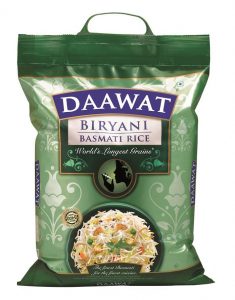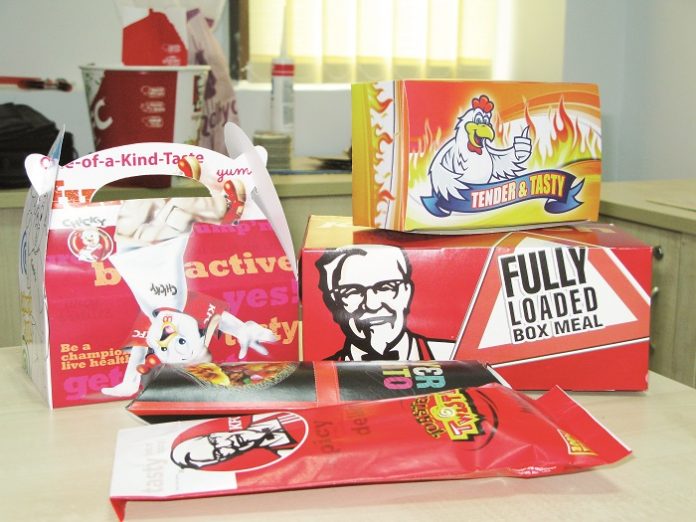Packaging, particularly food and beverage packaging, has evolved considerably in the last couple of decades to scale unprecedented heights. It has become a vitally important activity.
 Packaging performs an invaluable and vital function in every single product that is made and used/consumed by mankind. It enables us to maintain products in pristine or acceptable quality over long periods of time and provides each individual product with the requisite shelf-life that makes it possible to distribute it and preserve it through its entire life cycle and usage by consumers, often for repeated or multiple doses as required. This enables optimum centralized manufacture on an industrial scale and widespread distribution leading to large-scale economies and extensive availability of cheaper products. Without food processing technologies and the packaging to go with them, we would be standing knee-deep in wasted food and rotten produce. Packaging also enables uniform availability of seasonal products right through the year at stable prices.
Packaging performs an invaluable and vital function in every single product that is made and used/consumed by mankind. It enables us to maintain products in pristine or acceptable quality over long periods of time and provides each individual product with the requisite shelf-life that makes it possible to distribute it and preserve it through its entire life cycle and usage by consumers, often for repeated or multiple doses as required. This enables optimum centralized manufacture on an industrial scale and widespread distribution leading to large-scale economies and extensive availability of cheaper products. Without food processing technologies and the packaging to go with them, we would be standing knee-deep in wasted food and rotten produce. Packaging also enables uniform availability of seasonal products right through the year at stable prices.
Packaging of foods and beverages constitutes by far the largest end-user segment of the packaging industry. Research carried out by international agencies like the UN and World Bank has established that some 45% to 50% of an average family’s consumption world-wide is accounted for by food and beverages. That is why the share of food and beverage packaging in the total packaging spend in any country is anywhere between 50% and 70% with less developed nations exhibiting higher scores.
Let us now understand why packaging is such a vital part of our lives and how this pre-eminence has been attained.
Defining packaging
How do we define Packaging? The classical or traditional definition of packaging is – “The activities of designing and producing the container or wrapper for a product.” However, this definition is now hopelessly inadequate. Over the years, packaging has evolved considerably and the contemporary definition of packaging needs to be modified. Today, packaging is a complex and specialized technology in itself. It is highly multi-functional and cross-functional and is very application oriented. Packaging has has many vital technological, commercial and social implications, and is best defined by the various functions it now performs.
Some of the major functions that packaging now performs are identification, containment, protection, preservation, communication, promotion, dispensing/reclosure, convenience, brand security (authentication, pilfer-proofing, tamper evidence and anti-counterfeit protection), track-and-trace capability across the entire supply chain, distribution automation convenience (e.g., bar codes, scanning, RFID applications, etc.) and inventory management, sustainability/lowering of carbon footprint, marketing tool, post-use disposal, reuse or recyclybility, and special requirements, such as safety, statutory compliance, on-the-go consumption, portioning, microwave or conventional heating/cooking, controlled temperature storage, collation or unitization, spoilage indication, customization/variable data, etc.
Its usage straddles the entire gamut of production, marketing and distribution of all products in unit, intermediate and bulk applications as well as in-house end-use systems like in-plant applications in industry, all kinds of establishments and even domestic households.
Size and importance of the packaging industry
 Packaging is the world’s third largest industry. The only industries larger than packaging are Food and Petro/Energy and, as it happens, it has an extensive interaction with both of these. In almost every country in the world, packaging ranks among the top 5 industries. I would place the global packaging industry to be worth around US$ 940 billion in 2017. Smithers-PIRA, one of the world’s leading market research agencies in the packaging industry, has forecast that the global packaging industry would touch US$ 975 billion by 2018 growing at 4% per annum between 2013 and 2018. As mentioned earlier, it is the only industry that has to do with every single product produced or consumed and its growth is higher than GDP growth in almost all countries. It is the only industry that keeps growing even in times of economic depression and downturn. After all, people have still got to eat and consume essential products and this will keep going up and exhibit positive growth as global population increases.
Packaging is the world’s third largest industry. The only industries larger than packaging are Food and Petro/Energy and, as it happens, it has an extensive interaction with both of these. In almost every country in the world, packaging ranks among the top 5 industries. I would place the global packaging industry to be worth around US$ 940 billion in 2017. Smithers-PIRA, one of the world’s leading market research agencies in the packaging industry, has forecast that the global packaging industry would touch US$ 975 billion by 2018 growing at 4% per annum between 2013 and 2018. As mentioned earlier, it is the only industry that has to do with every single product produced or consumed and its growth is higher than GDP growth in almost all countries. It is the only industry that keeps growing even in times of economic depression and downturn. After all, people have still got to eat and consume essential products and this will keep going up and exhibit positive growth as global population increases.
The power of packaging
According to the classical definition, any marketing mix is denominated by 4 P’s (Product, Price, Placement and Promotion). Packaging was originally considered an attribute of the product portfolio but this is no longer the case. As we shall see later, it has metamorphosed into becoming the 5th and arguably the most important ‘P’ of all.
With the evolution of self-service, organized retail and departmental stores as the preferred means of distribution and selling, packaging has today become the most potent marketing tool available by:
Becoming the 5th and most important ‘P’ in the marketing mix.
Becoming the most important means of product differentiation.
Providing unique brand/corporate identity.
Becoming the only communicator with the consumer at the critical point of purchase.
Becoming the only medium that reaches 100% of consumers or potential consumers.
Packaging innovations have significantly influenced product and market development by helping establish new markets (e.g., aerosols, single-use unit packs, etc.), helping substantially increase sales volumes and market penetration, and influencing basic product designs and concepts.
A landmark survey carried out some years ago by the Point Of Purchase Advertising Industry (POPAI) in the USA on Consumer Buying Practices clearly established the power that packaging packs. The study found that:
An average consumer spends 22 minutes per visit to a multi-departmental store.
On average, over 1,700 brands/variants are on display at the store.
The number of brands that catch the consumer’s eye = 146.
Over 70% of purchase decisions are made in the store itself.
Over 70% of the packs picked up for scrutiny by the consumer are put into his cart and bought.
In the consumer’s mind, product quality = package quality.
Package graphics exert a powerful influence on the buying decision.
Packaging was thus termed a 9-second window (22 minutes/146 brands). With the proliferation of brands and variants and increasing time pressures, this window has now come down even further. Down the line, Procter and Gamble, one of the world’s leading FMCG companies, developed a concept called the First Moment Of Truth (FMOT), which was defined as the 7 seconds a consumer takes to decide whether to buy a brand or package that catches his eye. FMOT has now become the single most important factor in product and package design.
To conclude, packaging—especially food and beverage packaging—constitutes one of the most important activities that we undertake and is a business priority for the design and marketing of almost any product. It is such an integral part of the basic product that it could make the difference between success and failure.
Good packaging always sells; on the other hand, even the best product doesn’t sell without the right packaging.












